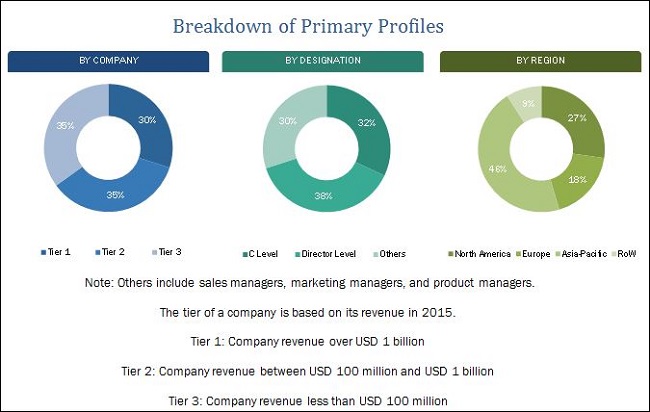Thrust vector control in a space shuttle vehicle with multiple engines helps in maintaining the trajectory, and minimizes the risk of engine/propulsion system as a whole by independently controlling the thrust magnitude and nozzle gimbal angles of each engine. For launch vehicles, missiles, and fighter aircraft, thrust vector control is a crucial technology to control trajectory and maneuverability. In a satellite system, thrust vector control is used to correct the misalignment and orbit position.

The global thrust vector control market is projected to reach USD 13.77 billion by 2022, at a CAGR of 10.41% during the forecast period. The need for super-maneuverable fighter aircraft, increased space research leading to greater number of launch vehicles being used, and increase in satellite launches are driving the growth of the thrust vector control market.
Thrust Vector Control (TVC) helps a propulsion system to redirect its thrust to provide directional control. The ability to control the thrust vector of a propulsion system is immensely advantageous to launch vehicles and systems, as well as Vertical/Short Takeoff and Landing (S/VTOL) aircraft. Furthermore, due to geopolitical unrest, arms race, and asymmetric warfare, there is a significant increase in the production of missiles, which is directly impacting the growth of the thrust vector control market.
Browse Detailed Research Report: https://www.marketsandmarkets.com/Market-Reports/thrust-vector-control-market-43861132.html
Browse 83 market data Tables and 43 Figures spread through 147 Pages and in-depth TOC on "Thrust Vector Control Market - Global Forecast to 2022"
Based on technology, Rotating nozzle is expected to be the fastest-growing segment of the market during the forecast period because of the rise in the acquisition of fighter aircraft with thrust vector control systems. Rotating nozzle is the preferred technology used in fighter aircraft for thrust augmentation because it can deflect thrust as much as 90 degrees relative to aircraft centerline.
Based on application, the fighter aircraft segment is projected to witness the highest growth during the forecast period. This is due to the increase in the production and procurement of super maneuverable fighter aircraft across the globe to have superiority over enemy aircraft during aerial combats.
North America is estimated to be the largest market for thrust vector market during the forecast period.
The thrust vector control market in North America is expected to witness the highest growth during the forecast period, owing to the increase in R&D and procurement of super maneuverable fighter aircraft, increased space research leading to greater number of launch vehicles being used, and increase in satellite launches.
Key players operating in the thrust vector control market include Honeywell International, Inc. (U.S.), Moog, Inc. (U.S.), Woodward, Inc. (U.S.), Jansen Aircraft Systems Control, Inc. (U.S.), BAE Systems (U.K.), Wickman Spacecraft & Propulsion Company (U.S.), Parker Hannifin, Inc. (U.S.), Sierra Nevada Corporation (U.S.), Dynetics, Inc. (U.S.), and SABCA (Belgium). These companies have well-equipped manufacturing facilities and strong distribution networks across North America, Europe, and Asia-Pacific.
Moog, Inc. (U.S.) is one of the leading companies in the thrust vector control market. The company has presence in Europe, North America, and Asia-Pacific. In 2016, Moog Inc. received a contract from Thales Alenia Space for the supply of MONARC-22 thruster engines for two Thales Alenia Space (TAS) spacecraft programs, namely, EXOMARS 2020 and SWOT Spacecraft.
United Technologies Corporation (U.S.) is one of the leading providers of thrust vector control in defense market. The company has strengthened its position in the market through a series of contracts. For example, in 2016, United Technologies Corporation received a contract from U.S. Navy worth USD 1.5 billion to produce F135-PW-100 propulsion and thrust vector control systems that will power the fifth-generation F-35.
Get Sample Here: https://www.marketsandmarkets.com/requestsampleNew.asp?id=43861132
About MarketsandMarkets™
MarketsandMarkets™ provides quantified B2B research on 30,000 high growth niche opportunities/threats which will impact 70% to 80% of worldwide companies’ revenues. Currently servicing 7500 customers worldwide including 80% of global Fortune 1000 companies as clients. Almost 75,000 top officers across eight industries worldwide approach MarketsandMarkets™ for their painpoints around revenues decisions.
Our 850 fulltime analyst and SMEs at MarketsandMarkets™ are tracking global high growth markets following the "Growth Engagement Model – GEM". The GEM aims at proactive collaboration with the clients to identify new opportunities, identify most important customers, write "Attack, avoid and defend" strategies, identify sources of incremental revenues for both the company and its competitors. MarketsandMarkets™ now coming up with 1,500 MicroQuadrants (Positioning top players across leaders, emerging companies, innovators, strategic players) annually in high growth emerging segments. MarketsandMarkets™ is determined to benefit more than 10,000 companies this year for their revenue planning and help them take their innovations/disruptions early to the market by providing them research ahead of the curve.
MarketsandMarkets’s flagship competitive intelligence and market research platform, "Knowledgestore" connects over 200,000 markets and entire value chains for deeper understanding of the unmet insights along with market sizing and forecasts of niche markets.
Contact:
Mr. Aashish Mehra
MarketsandMarkets™ INC.
630 Dundee Road
Suite 430
Northbrook, IL 60062
USA : 1-888-600-6441
Comments
Post a Comment